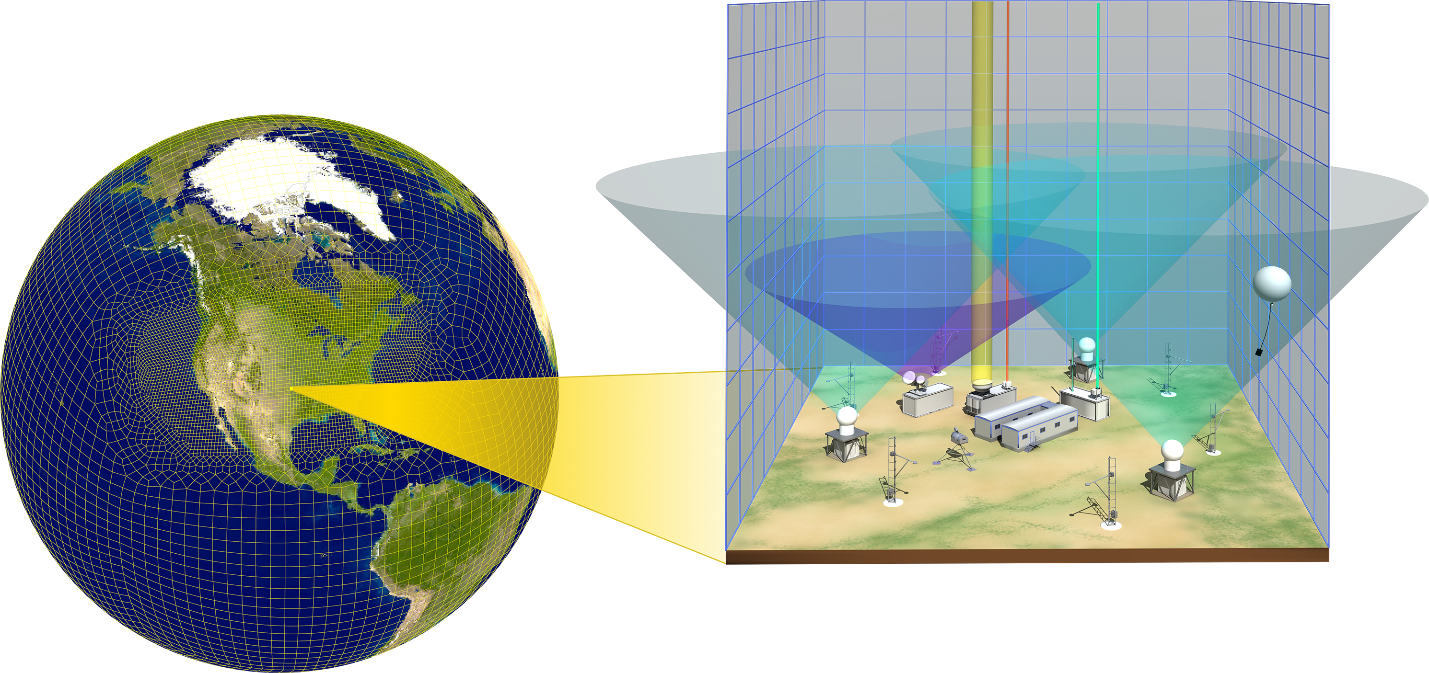From the User Executive Committee (UEC) Subgroup Chairs: July 2024
Published: 26 July 2024
Enhancing Communication Between ARM and Modelers: A Year in Review
Editor’s note: Members of ARM’s User Executive Committee (UEC) participate in subgroups that aim to help broaden community outreach. In a four-part series of blogs, each subgroup chair during the 2023–2024 UEC term will introduce their subgroup, share their subgroup’s ideas and recommendations to ARM, and ways in which the ARM community can engage with subgroup members. Susannah Burrows shares an update from the subgroup focused on enhancing communication with the modeling and Energy Exascale Earth System Model (E3SM) communities.
Our Subgroup’s Charge and Recent Activities
Our UEC subgroup continues our mission to bridge the gap between atmospheric observations and climate modeling. Since our last update in 2022, our subgroup, which I now co-chair with Erika Roesler and Yunyan Zhang, has been diligently working to help ARM identify approaches to ensure that its rich observational data can be effectively used to improve climate models.

Over the past year, our subgroup has met several times to refine and build on the recommendations made in previous years. The summary report from the October 2023 UEC meeting discusses several of these recommendations.
Latest Recommendations to ARM
During our recent meetings, we developed a new series of recommendations aimed at enhancing the use of ARM data in climate modeling. These recommendations focus on addressing key gaps and leveraging new opportunities to improve the integration of measurements and modeling.
In particular, our subgroup noted that the integration of measurements and process modeling is not as thorough for aerosol-cloud-turbulence interactions as for other areas (e.g., clouds and convection). Case libraries with an emphasis on aerosols and aerosol-cloud interactions might be needed if there is community interest.

We also noted the opportunities for the use of the emerging E3SM storm-resolving model capabilities (both global and doubly periodic) as a new approach to bridge the scale gap between observations and models. The Regionally Refined Model (RRM) capability of the E3SM Atmosphere Model simulations that zoom into ARM fixed-location observatories and mobile field campaign sites would be particularly useful in providing day-to-day hindcasts in comparison with ARM observations, especially those with scanning capabilities. RRM facilitates simulations with higher spatial resolution in the refined domains and coarser resolution outside, thus offering huge gains in computational efficiency while still maintaining the representation of interactions across local, regional, and global scales.
Finally, our subgroup identified that tutorials offered by model developers and focused on specific processes are another means to bring communities together. For example, the recent E3SM Tutorial Workshop took place from May 7 to 10, 2024, at the National Energy Research Scientific Computing Center (NERSC) at Lawrence Berkeley National Laboratory. This workshop provided an opportunity for more than 50 attendees to gain an overview of E3SM capabilities, as well as hands-on experience with simulations and analysis tools.
Engaging With Our Subgroup: We Need Your Input!
Community input is critical to the success of our mission. To refine our recommendations and better understand the community’s needs, we are preparing a survey to gather feedback on research priorities from the ARM user community and its atmospheric modelers, including those who may currently be less well connected with ARM. This survey will help us understand your needs, provide valuable feedback to ARM, and inform discussions at the upcoming Joint ARM User Facility/Atmospheric System Research (ASR) Principal Investigators Meeting. This survey will be distributed broadly, targeting the ARM/ASR and E3SM mailing lists, DOE Regional & Global Model Analysis (RGMA) program area, and other relevant groups.
We invite you to share your thoughts and connect us with modeling teams or other groups that should receive the survey. Your participation will ensure that the research priorities align with the community’s needs and that ARM’s resources are effectively used to advance climate modeling.
Stay Involved
We look forward to your input and collaboration as we continue to build the bridge between ARM’s observational capabilities and the needs of the modeling community. Please reach out to any member of our subgroup with your thoughts, suggestions, or questions. We look forward to hearing from you and working together to advance the shared goal of enhancing the synergy between observations and modeling, ultimately leading to more accurate and reliable climate predictions.
Keep up with the Atmospheric Observer
Updates on ARM news, events, and opportunities delivered to your inbox
ARM User Profile
ARM welcomes users from all institutions and nations. A free ARM user account is needed to access ARM data.


















